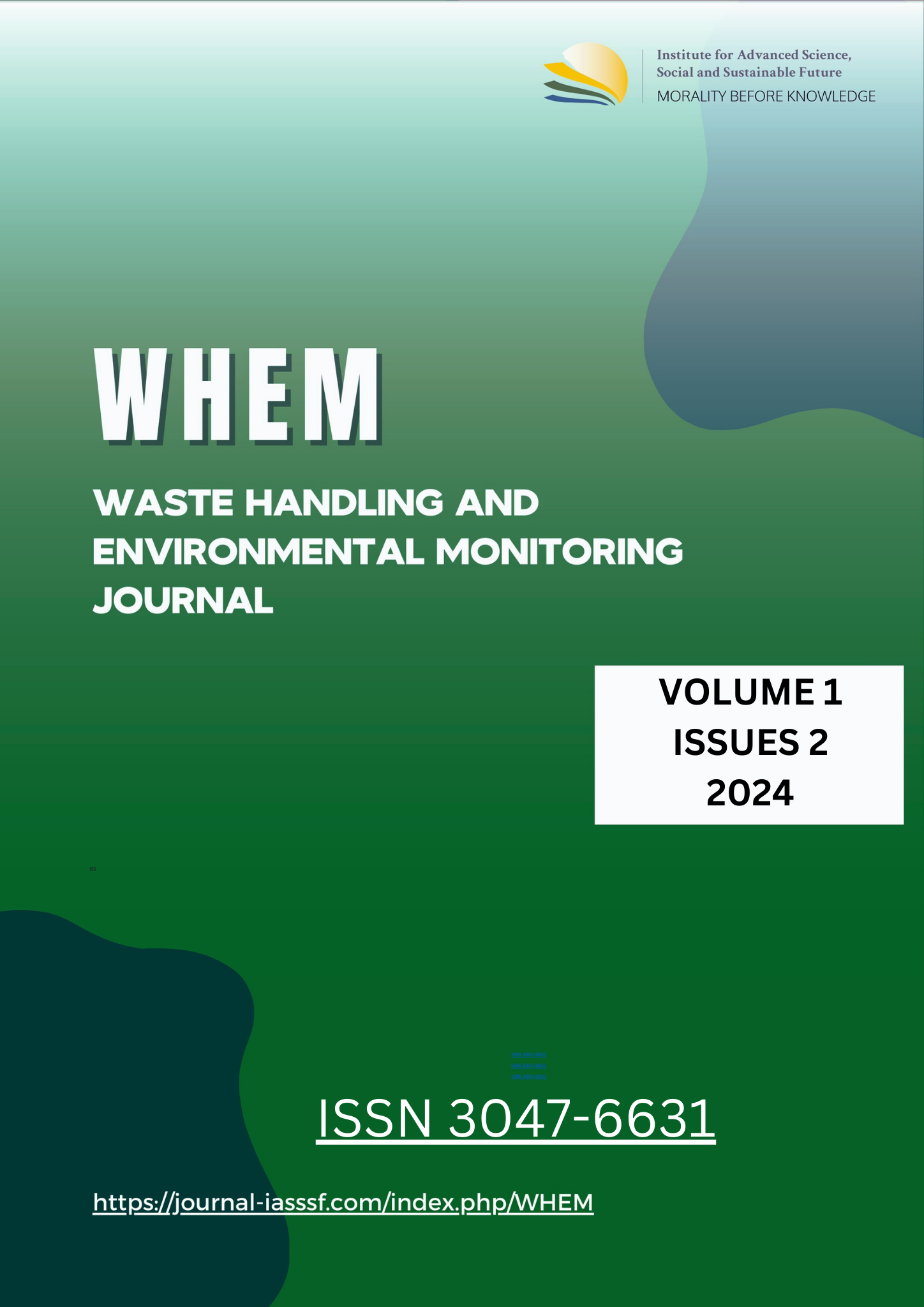Evaluation of waste composition for biochar production as a sustainable waste management approach
DOI:
https://doi.org/10.61511/whem.v1i2.2024.1219Keywords:
biobriquettes, waste utilization, sustainable energyAbstract
Background: To meet human life needs, fuel energy is obtained from fossil sources, such as coal, found in the Earth's crust. However, non-renewable energy sources in the Earth's crust will eventually run out. One alternative fuel is the production of biobriquettes from various types of waste. Methods: Using a literature review method, this study aims to determine which waste is most suitable for use in the production of biobriquettes. The samples taken are journals sourced from Google Scholar ranging from 2017 to 2022 that align with the discussion topic. Findings: Among various raw materials, the best waste for biobriquette production is found to be a mixture of dacron waste and corn cob, with a moisture content of 3.45% and a carbon value of 7986.45 cal/g. Conclusion: The results of the above study indicate that the production of biobriquettes from dakron waste and corn cobs is the best option because it yields the highest calorific value and the lowest moisture content, in accordance with SNI 01/6235/2000. Novelty/Originality of this article: This study presents a novel approach by identifying a specific combination of dacron waste and corn cob for biobriquette production, showcasing its superior calorific value and low moisture content, thus contributing to sustainable energy solutions and waste management practices.
References
Amanu, N. (2022). Pemanfaatan Eceng Gondok (Eichornia Crassipes) Dan Sampah Plastik High Density Polyethylene (Hdpe) Sebagai Bahan Baku Briket. https://dspace.uii.ac.id/handle/123456789/37879
Anizar, H., Sribudiani, E., & Somadona, S. (2020). Pengaruh bahan perekat tapioka dan sagu terhadap kualitas briket arang kulit buah nipah. Perennial, 16(1), 11-17. https://doi.org/10.24259/perennial.v16i1.9159
Arbi, Y., & Irsad, M. (2018). Pemanfaatan Limbah Cangkang Kelapa Sawit Menjadi Briket Arang Sebagai Bahan Bakar Alternatif. CIVED, 5(4).
Bimantara, S. E., & Hidayah, E. N. (2019). Pemanfaatan limbah lumpur ipal kawasan industri dan serbuk gergaji kayu menjadi briket. Jukung (Jurnal Teknik Lingkungan), 5(1). http://dx.doi.org/10.20527/jukung.v5i1.6192
Faizal, M., Saputra, M., & Zainal, F. A. (2015). Pembuatan briket bioarang dari campuran batubara dan biomassa sekam padi dan eceng gondok. Jurnal Teknik Kimia, 21(4), 28-39. http://ejournal.ft.unsri.ac.id/index.php/JTK/article/view/548
Fitri, N. (2017). Pembuatan Briket dari Campuran Kulit Kopi (coffea arabica) dan Serbuk Gergaji dengan Menggunakan Getah Pinus Sebagai Perekat (Doctoral dissertation, Universitas Islam Negeri Alauddin Makassar).
Hutasoit, A. (2012). Briket Arang dari Pelepah Salak. [Skripsi]. Padang: Fakultas Teknologi Pertanian. Universitas Andalas.
Moeksin, R., Pratama, K. A. A., & Tyani, D. R. (2017). Pembuatan briket biorang dari campuran limbah tempurung kelapa sawit dan cangkang biji karet. Jurnal Teknik Kimia, 23(3), 146-156. http://ejournal.ft.unsri.ac.id/index.php/JTK/article/view/754
Putri, R. E., & Andasuryani, A. (2017). Studi mutu briket arang dengan bahan baku limbah biomassa. Jurnal Teknologi Pertanian Andalas, 21(2), 143-151. https://doi.org/10.25077/jtpa.21.2.143-151.2017
Setiawan, A. B., & Praswanto, D. H. (2022). Pemanfaatan Limbah Dakron dan Tongkol Jagung Sebagai Bahan Briket dengan Campuran Minyak Sawit. Prosiding SENIATI, 6(2), 259-266. https://doi.org/10.36040/seniati.v6i2.4984
Wulandari, S. (2020). Pengaruh Aroma Terapi Terhadap Kualitas Tidur Anak Yang Menjalani Hospitalisasi:(Literatur Review). PIN-LITAMAS, 2(1), 258-266. https://ejournal.stikesjayc.id/index.php/PLT/article/view/45
Downloads
Published
How to Cite
Issue
Section
Citation Check
License
Copyright (c) 2024 Waste Handling and Environmental Monitoring

This work is licensed under a Creative Commons Attribution 4.0 International License.

















